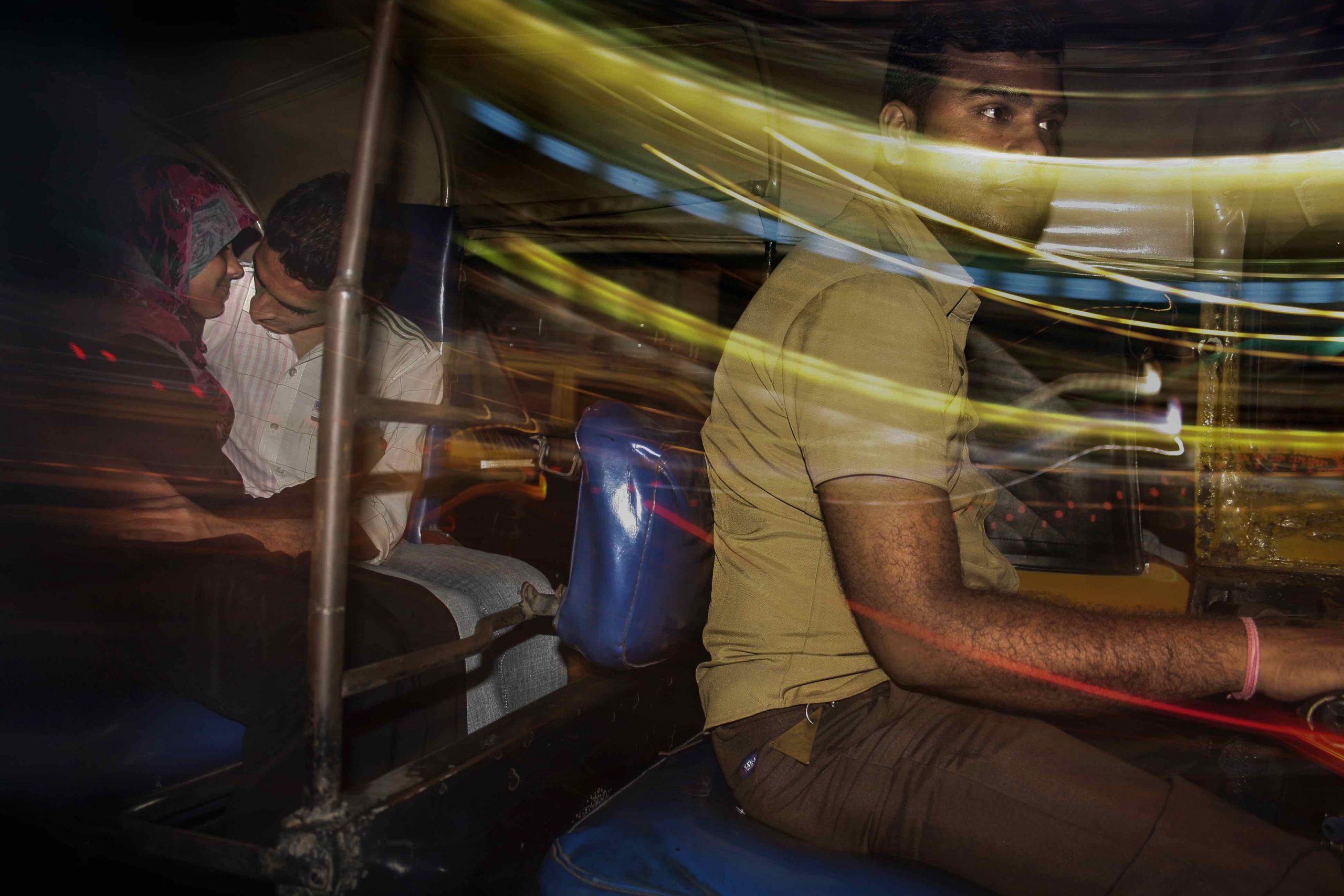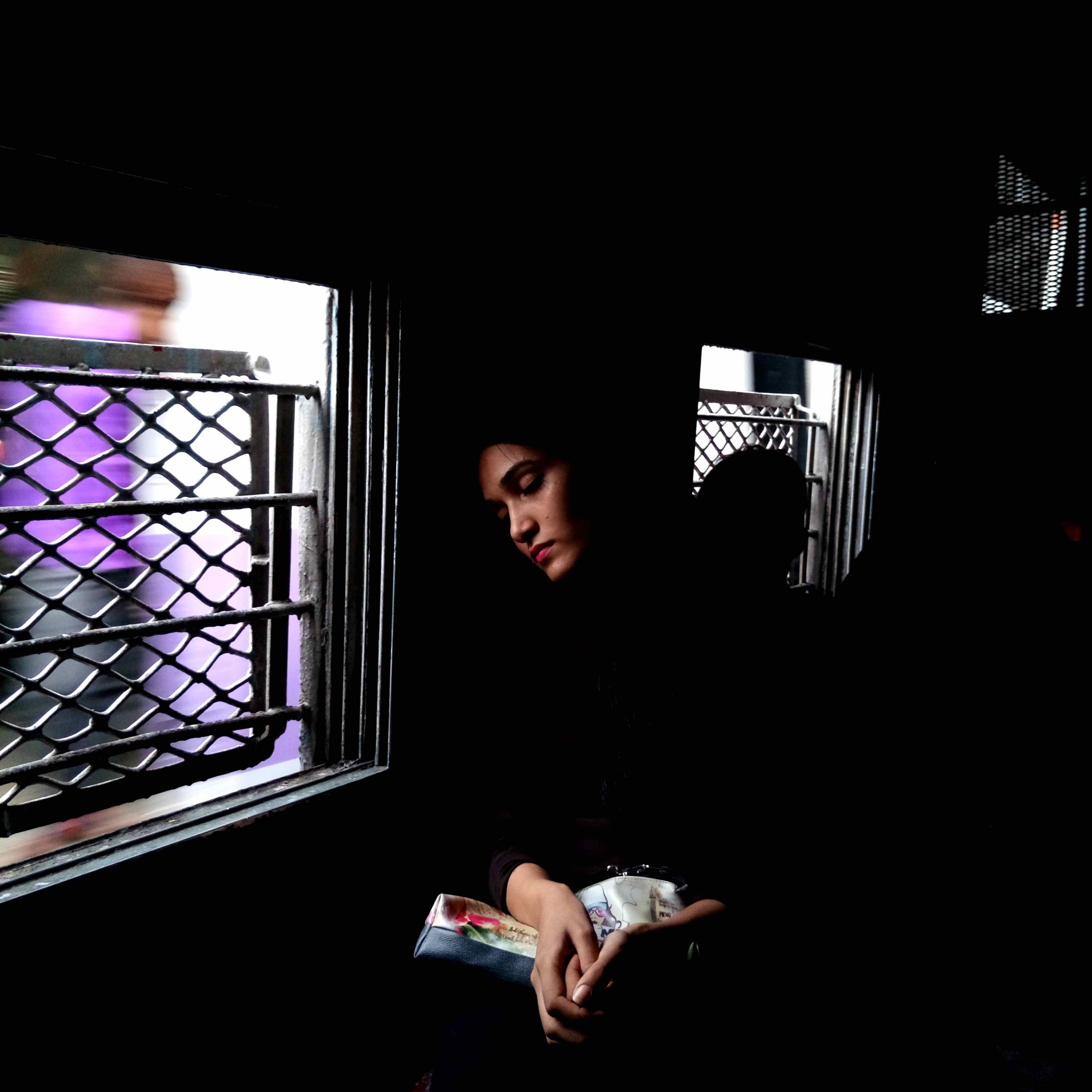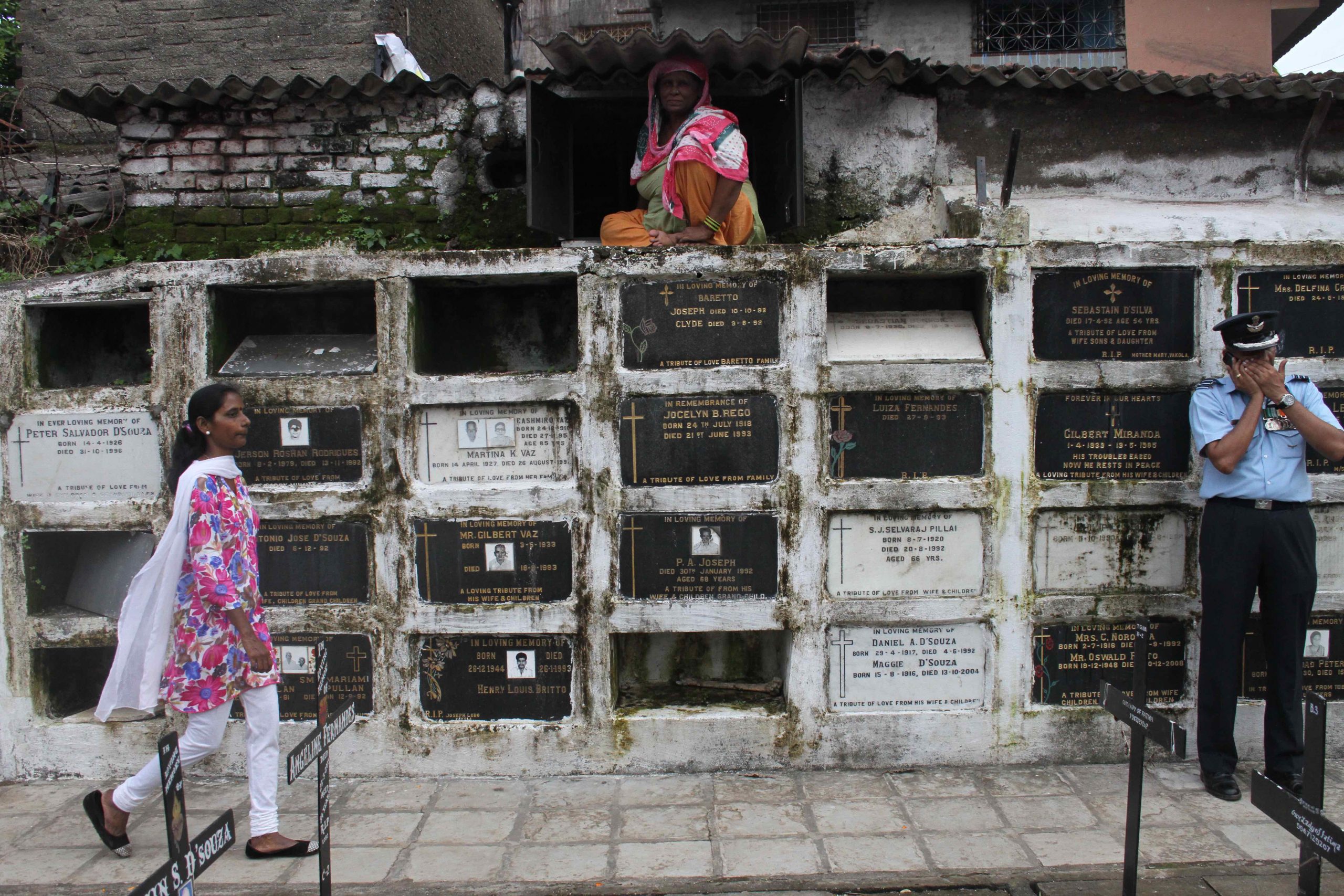by Zahra Amiruddin

In a recent essay tracing the evolution of the ‘New Woman’ photographer, curator Andrea Nelson notes, in the American context: ‘whether hired by government agencies or working independently, women contributed profoundly to the visual record of the Depression and the events leading up to and following World War II, defining what would become social documentary’.[1] She remarks that despite the example of renowned photojournalists Lee Miller and Margaret Bourke-White, whose front-line war photography and visceral images of the liberation of Nazi concentration camps shocked the world, women practitioners often received so-called ‘soft assignments’ set in ‘safe spaces’ – to photograph the home front, to build stories around the subject of women and children. One can safely assume that even today, despite major shifts in women’s autonomy and agency in certain media spheres, this bias against women practitioners persists within contemporary photojournalism. In terms of a wider argument: whatever the practitioner’s gender (straight, queer, trans, non-binary), gendered perspectives thoroughly infuse photojournalism, contradicting its historical aspirations and claims to depict social “reality”/ historical “truth” from a “neutral” position.
I had been reflecting on these issues for some time, intensely so in 2020, when Covid-19 lockdowns and seemingly endless periods of isolation and social distancing provoked a greater need for contact and communication, for kinship with image makers trying to create meaningful work in restrictive conditions. I was lucky – I might say, fated – to connect online with a group of eight women photographers based in different parts of India. We formed the collective 8:30, now in its second year of collaboration.[2] My close association with this group has deepened my understanding of how gender influences perception and artistic practice, including documentary reportage and personal narratives [Fig. 1].

In my view, a woman practitioner’s “gendered” gaze is intrinsically feminist and seems to foster a slower, more intimate, more considered visual language in the narration of crisis, trauma, patriarchal violence and social erasure, as well as in accounts of survival, courage and perseverance [Fig. 2]. This conviction supports my close deconstructive reading of the work and practice of Anushree Fadnavis, India’s first woman photojournalist to win the Pulitzer Prize (Breaking News), as part of a Reuters team awarded in 2020 for their coverage of the massive pro-democracy protests that unfolded over many months in Hong Kong in 2019.[3] Her images strongly reflect a principle of her early training: whatever the practitioner’s own sensitivities and sympathies, ‘the picture is the story, and the story is the issue’, as she puts it.
Gendered Being / Seeing
I first interacted with Anushree in response to her photo essay series #traindiaries, shaped from a three-year documentation of daily commuters in the Ladies compartment of a Mumbai local train – a journey she had romanticized since she was a little girl. As a student in the one-year photojournalism programme at the Udaan School of Photography, Mumbai in 2012-2013, she began this project as an assignment for Mumbai Weekly, the college newspaper. ‘We have school friends, college buddies, office colleagues, colony friends. In Mumbai, connected by its lifeline of locals, we also have “train friends”,’ Anushree explains. ‘In the women’s compartment, I often see travellers pouring their hearts out to each other… At times they even share their secrets with strangers. They know that their secrets will be safe with these unfamiliar faces because often one never sees them again… But then there are also strangers, who over the years end up becoming close friends and almost become a second family… In this journey of two to three hours each day, people forge many relationships with other commuters and with their environment. I wanted to capture the essence of this travel – the relationships, my own visual affair and, most importantly, the people.’[4]

Anushree’s images depict life unspooling over long hours within the rocking compartment – the solitary, the companionable, the silent, the gregarious, all crowded in together; mothers selling accessories while their infants doze; moments of comfort, moments of tension; naps and reveries; gossip and shared activities such as braiding hair, discussing fashion, applying nail paint, stringing flowers into garlands, winding yarn, celebrating birthdays, completing home tasks, venting frustrations, catching up on television serials, etc… These photographs make us aware of the multiverse of personal stories contained within this space that is supposed to protect women from intrusive male stares and unwanted male touch [Fig. 3]. A 2016 video posted on Anushree’s Instagram account depicted a woman’s shadow appearing and disappearing against the train window that became a perennially moving light-box. Deceptively simple, it brilliantly asserted the extraordinary nature of the seemingly ordinary journeys undertaken in Mumbai’s local trains by an average of 60 lakh daily commuters (post-pandemic, as compared with the pre-pandemic average ridership of 80 lakh).[5]

The #traindiaries series received wide attention, and Anushree was invited to be a TEDx speaker in January 2017.[6] Sifting through these images that brim with complex connections [Fig. 4], I found myself longing for the familiar warmth (and, sometimes, chaotic frenzy) of the Ladies compartment, a space that I had avoided from the start of the pandemic. Anushree feels that her gender was a great advantage on the train, enabling access and freedom to frame her subjects just as she wanted to: ‘It’s a boon to be woman photographer in situations where women are seen as less intimidating. It helps the subject to relax, to feel comfortable in front of the camera, and to open up’ [Fig. 5]. This is also evident in her other work, such as the quiet yet intense photographs for a Reuters story about Indian men overseas who have absconded/abandoned their wives at home; undeterred by a tortuous bureaucratic process, hundreds of these deceived women have mobilized to have the offenders’ passports cancelled under Indian law.[7]

Countless times Anushree has been given unsolicited and discriminatory advice about the risks of working at mass events, and of going out to shoot unaccompanied. ‘Being a woman in those contexts does bring challenges – for instance one has to be constantly on high alert in large crowds, as during the Kumbh Mela or the Lalbaugcha Raja procession, for fear of being groped or worse. If I start feeling unsafe, of course I will find a way out. But shouldn’t that decision be left to me?’ Similar views are held by photojournalist Ruhani Kaur, who describes how a reporter at Open Magazine categorically stated he would rather go with a male colleague than with her for an assignment in Kashmir in 2015. ‘Nothing was happening there,’ she asserts. ‘It just stemmed from the mindset that it is a conflict zone. I, of course, made a big deal about it. I am okay with an editor deciding who gets to go for an assignment, but you shouldn’t be able to say out loud that you don’t want to travel with a woman, even if you think it.’[8]
I ask Anushree whether she has ever avoided making a photograph because her conscience wouldn’t allow it. She narrates an experience that has since influenced her practice and increased her awareness of her ethical boundaries. After a brief stint with the daily newspaper/e-portal DNA India, Anushree joined Indus Images, a news agency founded by her mentor Arko Datta (2005 World Press Photo winner). She was assigned to cover a promotional event for the Bollywood film Dhoom 3 that featured Katrina Kaif as female lead. During the event a strong gust from a rotating fan caused Kaif to experience what is delicately termed a ‘wardrobe malfunction’, which drew everyone’s attention. All around Anushree camera shutters immediately began firing, but she held back. An image of Kaif’s embarrassing moment was later published in DNA by their staff photographer, and Anushree’s boss at Indus asked her why she did not have a photo of the incident. ‘I told him that I couldn’t help but put myself in her shoes. Something inside me told me to stop.’
Against the Odds
I ask Anushree whether her photographic practice has changed or transitioned through the experience of being India’s first woman photojournalist to win the Pulitzer Prize. Her winning image shows passengers under a gloomy sky pushing their luggage along a brick-strewn street after pro-democracy activists blocked the roads leading to the Hong Kong airport on 1 September 2019. ‘It was surreal,’ she recalls. ‘The protestors were trying to disrupt the flights. After being chased by the police, they decided to take an alternate route to reach a metro station to disrupt the movement of subway trains there. On way to the Tung Chung metro station, the protesters started blocking roads using bricks and barricades. I saw people getting out from their cars, walking across; a few of them also showed their support to the protestors and a few others decided to walk towards the airport harmoniously with the protestors. The picture I took was to show the hardships faced by people amid protests.’[9]
While Anushree had never expected to win the Pulitzer, she had carried this dream right from the start of her career under Datta’s mentorship. Appropriately, it was the late Danish Siddiqui – himself a 2018 Pulitzer recipient[10] – who shared the news with her via a congratulatory Whatsapp message. After many phone calls, interspersed with moments of disbelief, she finally threw aside all her social distancing protocols and hugged her overjoyed roommate.
It is an open question as to whether social documentary and photojournalism can ever manifest a “neutral” perspective [Fig. 6, 7]. Is it really possible to create “pure” visual work – i.e., images detached from/transcending the personal history, gender, politics, identity, orientation, class and other factors that imprint and condition all of us?

Meanwhile, as media becomes increasingly politicized, photojournalists continue to be at risk of being punitively profiled, targeted, surveilled, censored, banned and blocked.[11] For instance, in October 2022 Kashmiri photographer Sanna Irshad Mattoo, part of the Reuters team that won the Pulitzer Prize (Feature Photography) in 2022 for documenting the impact of the Covid-19 pandemic in India, was stopped by Indian officials at Delhi airport and denied permission to board a flight to New York to attend the award ceremony. In July 2022 she had been similarly stopped at Delhi airport and not permitted to board a flight to Paris for a book launch and photography exhibition to which she had been invited as one of ten awardees of the Serendipity Arles Grant 2020. ‘I was not given any reason but told I would not be able to travel internationally,’ tweeted Mattoo, who had received the grant for ‘groundbreaking news’, ‘in-depth storytelling’, and for her depictions of the ‘tightrope tension between the seeming ordinariness of life and the stark symbols of a menacing militarised milieu of Kashmir’.[12] It is truly ironic that immigration officials stamped her passport with the words “cancelled without prejudice”.
It is always really disheartening to encounter gender discrimination in the field of photojournalism, especially when the odds of being granted professional recognition and equal opportunities are so heavily stacked in favour of men.‘Take PTI for instance, the largest news agency in our country – it doesn’t have a single woman photographer. It’s the same with ANI and AFP – no Indian women photojournalists work at these agencies. If you look at the data collated by Women Photograph about bylines in leading newspapers, the statistics are right in front of you,’ Anushree points out.[13] Hence she believes it is important to use the words “woman photojournalist” in a field where the ratio of male to female professionals continues to be tremendously skewed, and where women’s contributions are undervalued, and their intellectual and creative potential reflexively negated.
Anushree says she has been experiencing post-pandemic burnout and a kind of PTSD. She lost her grandmother; she extensively documented the harrowing second wave of Covid in India; and also documented the country’s Covid migrant crisis, when 139 million workers lost their jobs and countless poor rural and urban families fell into further poverty.[14] Being a media figure and a recognised voice for essential stories, Anushree carries the heavy weight of expectation, as people share their traumas and struggles with her in the hope that her empathetic depictions of their suffering might draw attention and make a difference. ‘In those moments I feel so helpless, because I know I am just a photographer, and not all photographs make it past the edit… Also, history shows us that social change comes slowly. Change effected through journalism is slow. But how do I explain this to someone in pain?’
She admits she feels a self-inflicted pressure after receiving the Pulitzer – a sense that as a high achiever in a male-dominated profession, her work is always under scrutiny. She wonders if this tension arises from her own gender conditioning, combined with the intractable patriarchal dominance and custom that women experience all the time. ‘I am trying to figure out how to use this pressure in a positive way,’ she says with determination. ‘As women, we tend to internalize a lot of feelings and consider all possibilities before claiming that we can be successful at something. I am taking my time with navigating this feeling because I want to see it through myself.’

Her images speak for her – they are her strongest voice, reminding us that she has indeed travelled a long distance from those earlier journeys when, camera in hand, she was popularly known as “the girl on the train”.
Notes
- ‘To invoke the model of the New Woman is to invite complexity and ambiguity into the study of modern photography… As a symbol she represented, on the one hand an economically independent and self-reliant contributor to society, and on the other hand a threat to men’s control of politics and the workplace which relied on conservative definitions of femininity and motherhood. Outside Europe and the United States, the fashionable New Woman who embraced a Western urban lifestyle fuelled concerns over unbridled modernity and the threat of foreign influences to national identity, which muddied the struggle for gender equality. Intensely debated, the multifaceted idea of the New Woman helped break down monolithic constructions of gender but did not automatically secure legitimacy or equality. While many women photographers all over the globe drew on or reformulated the ideal of the New Woman as they made sense of their own position in society, others, like Homai Vyarawalla, did not think of herself as a “woman photographer” but rather simply a “photographer”. She remarked later in life, ‘The idea didn’t come to me that I was doing something unusual… something only a man was supposed to do.”’ See Andrea Nelson, ‘The New Woman behind the Camera’, The Alkazi Foundation for the Arts, 19 November 2021. Full text at https://alkazifoundation.org/the-new-woman-behind-the-camera/
- Veeranganakumari Solanki, ‘Sometimes Magic Looks like This: Narrative Threads in Eight Thirty’s Works’, ASAP I art, 25 September 2021; https://www.asapconnect.in/post/276/singlealbums/sometimes-magic-looks-like-this
- See https://www.pulitzer.org/winners/photography-staff-reuters-2
- Anushree Fadnavis, ‘#traindiaries’, The Hindustan Times; https://www.hindustantimes.com/static/groundglass/traindiaries.html
- Vallabh Ozarkar, ‘Mumbai local trains see highest ridership since pandemic onset’, The Indian Express, 19 March 2022; https://indianexpress.com/article/cities/mumbai/mumbai-local-trains-see-highest-ridership-since-pandemic-onset-7826370/
- Anushree Fadnavis at TEDxEMWS, ‘The story of 7 billion people, all going from place A to place B’, uploaded to Youtube on 21 June 2017; https://www.youtube.com/watch?v=o1uLg-q8bEU
- Clare Baldwin, ‘The Runaway Husbands’, Reuters, 10 December 2019; https://widerimage.reuters.com/story/the-runaway-husbands
- Manisha Pandey, ‘Why are there so few women photojournalists in our newsrooms?’ Newslaundry, 15 December 2015; https://www.newslaundry.com/2015/12/15/why-are-there-so-few-women-photojournalists-in-our-newsrooms
- Sana Fazili, ‘From Engineering to Pulitzer in Photojournalism: How India’s Anushree Fadnavis Aced Her Way to Victory’, News 18, 19 August 2020; https://www.news18.com/news/buzz/from-engineering-to-pulitzer-in-photojournalism-how-indias-anushree-fadnavis-aced-her-way-to-victory-2614819.html
- Delhi-based Indian photojournalist Danish Siddiqui (1983-2021) led the national Reuters multimedia team as Chief Photographer. He received a Pulitzer Prize (Feature Photography) in 2018 as part of a Reuters team documenting the Rohingya refugee crisis. In July 2021 he was killed on assignment in Afghanistan while covering a clash between Afghan troops and Taliban fighters at Spin Boldak near the Pakistan border. In 2022 he was posthumously awarded the Pulitzer Prize (Feature Photography) with colleagues Adnan Abidi, Sanna Irshad Mattoo and Amit Dave for documenting the Covid-19 toll in India through images that “balanced intimacy and devastation, while offering viewers a heightened sense of place”. https://www.pulitzer.org/winners/adnan-abidi-sanna-irshad-mattoo-amit-dave-and-late-danish-siddiqui-reuters
- In 2022 the Indian government stopped several activists and journalists from leaving or entering the country. In March, investigative journalist/author/Washington Post columnist Rana Ayyub was stopped at Mumbai airport when she was about to board a flight to the UK to speak at the International Centre for Journalists. She won her appeal against the decision in the Delhi High Court, and was permitted to fly a few days later. In March, the government deported Professor Filippo Osella, an anthropologist/scholar of South Asian studies at the University of Sussex who had visited India on research work for over three decades, from Thiruvananthapuram airport after he arrived to attend a conference on Kerala’s coastal communities. The professor called his deportation arbitrary and unconstitutional and challenged it in the Delhi High Court. The state responded that he had been placed in the ‘highest category of blacklisting’ based on ‘sufficient material’ collected as evidence against him. The case is ongoing. In April, former Amnesty India head Aakar Patel was stopped on two occasions at Bengaluru airport while about to board a flight to the US, on the grounds that during his tenure Amnesty had violated India’s foreign exchange rules. He was labelled a ‘flight risk’ and ordered by a court to get government permission for future travel abroad. In August, Angad Singh, an Emmy-nominated Indian-American journalist who had made documentaries on India’s Covid crisis and the farmers’ protest movement for the progressive American current affairs platform Vice News, was allegedly deported back to New York soon after he landed in Delhi. https://www.bbc.com/news/world-asia-india-63226116
- See The Hindu Bureau, ‘Government should come clean on Sanna Irshad Mattoo incident, says Press Club of India,’ The Hindu, 23 October 2022; https://www.thehindu.com/news/national/centre-should-come-clean-on-stopping-photojournalist-mattoo-from-us-travel-to-collect-pulitzer-prize-pci/article66048833.ece. Also see Muzaffar Raina, “Pulitzer-winning photographer stopped from flying to Paris”, The Telegraph Online, 3 July 2022; https://www.telegraphindia.com/india/pulitzer-winner-stopped-from-flying-to-paris/cid/1872922
- Launched in 2017, the non-profit Women Photograph is ‘particularly committed to centering the voices of women and nonbinary photographers of colour’. Its database ‘includes more than 1,600 independent documentary photographers based in 100+ countries and is available privately to any commissioning editor or organization. Women Photograph also operates an annual series of project grants, a year-long mentorship program, an annual skills-building workshop, and collects data on hiring and publishing statistics in the visual media industry.’ While current data is drawn from major Western newspapers (The New York Times, The Washington Post, The Wall Street Journal, The Los Angeles Times, The San Francisco Chronicle, The Globe and Mail, Le Monde and The Guardian), the initiative’s mission ‘is to shift the makeup of the photojournalism community’ through supporting fully intersectional and equitable work, and ‘highlighting photographers across the spectrum of all identities’. https://www.womenphotograph.com/data
- Nivedita Jayaram and Priyanka Jain, ‘The Covid-19 migrant crisis showed why the state must protect living wages as a public good’, Scroll, 10 January 2021; https://scroll.in/article/983343/the-covid-19-migrant-crisis-showed-why-the-state-must-protect-living-wages-as-a-public-good
 Zahra Amiruddin is an independent writer, photographer, and educator specializing in visual practices and contemporary art. Her interests include ethnographic studies, astronomy, personal narratives and family histories. Her work has been featured in national and international publications, and in solo and group exhibitions in India, Greece, South Korea and Indonesia. In 2021 her work was published as supporting text in Between Doors, a photobook about North Korea. She is currently developing a collaborative project with Eight Thirty, a women’s photography collective that works across different locations in India.
Zahra Amiruddin is an independent writer, photographer, and educator specializing in visual practices and contemporary art. Her interests include ethnographic studies, astronomy, personal narratives and family histories. Her work has been featured in national and international publications, and in solo and group exhibitions in India, Greece, South Korea and Indonesia. In 2021 her work was published as supporting text in Between Doors, a photobook about North Korea. She is currently developing a collaborative project with Eight Thirty, a women’s photography collective that works across different locations in India.
 Anushree Fadnavis is a Pulitzer prize winning photojournalist with Reuters news agency and is currently based out of New Delhi, India. Her work has been published in major Indian and international print and online forums, including BBC, The New York Times, The Guardian, The Week, Open Magazine, The Hindu, Hindustan Times, Scroll, The Indian Express, DNA, Creative Image (founded by renowned photographer Raghu Rai), Arts Illustrated, the online gallery of Katha Collective, and Life on Instagram 2017 (Penguin UK). She has worked on the subject of Mumbai for a project by the National Film Board of Canada. She held a month-long residency at Galleri Image, Aarhus, and was a panelist at the Indian Photography Festival, Hyderabad in 2016. Anushree’s personal work from the ladies compartment in Mumbai local trains called #traindiaries, where she documents the daily lives of the women commuters around her along with her own personal/visual experiences lies close to her heart. It’s an ongoing work for the last 8 years.
Anushree Fadnavis is a Pulitzer prize winning photojournalist with Reuters news agency and is currently based out of New Delhi, India. Her work has been published in major Indian and international print and online forums, including BBC, The New York Times, The Guardian, The Week, Open Magazine, The Hindu, Hindustan Times, Scroll, The Indian Express, DNA, Creative Image (founded by renowned photographer Raghu Rai), Arts Illustrated, the online gallery of Katha Collective, and Life on Instagram 2017 (Penguin UK). She has worked on the subject of Mumbai for a project by the National Film Board of Canada. She held a month-long residency at Galleri Image, Aarhus, and was a panelist at the Indian Photography Festival, Hyderabad in 2016. Anushree’s personal work from the ladies compartment in Mumbai local trains called #traindiaries, where she documents the daily lives of the women commuters around her along with her own personal/visual experiences lies close to her heart. It’s an ongoing work for the last 8 years.